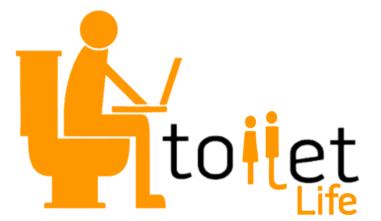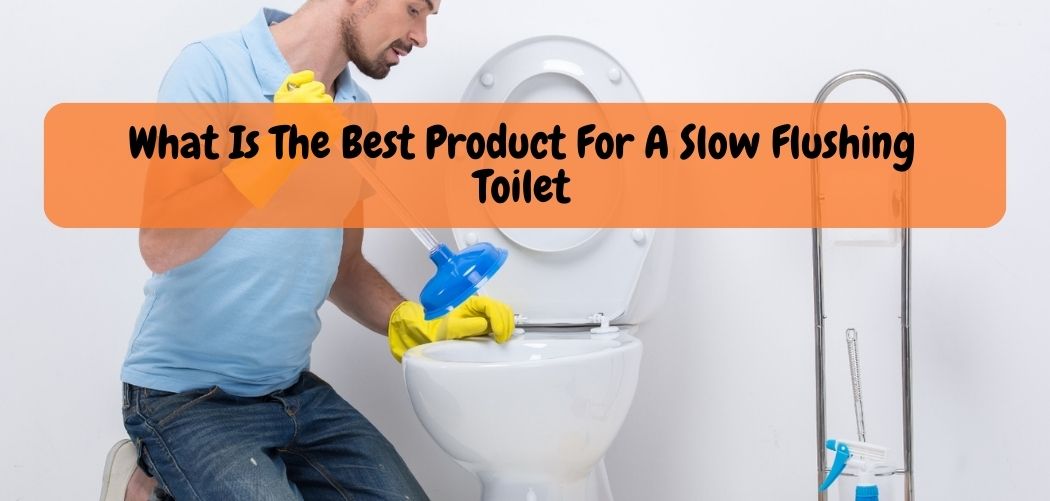The best product for a slow flushing toilet is a toilet plunger. Using a plunger effectively can clear blockages and improve the flushing performance of a toilet.
Is there anything more frustrating than a slow-flushing toilet? Whether it’s at home or in a public restroom, a toilet that takes its time to clear away waste can be a major inconvenience.
Fortunately, there are solutions available to address this common issue and restore the functionality of your bathroom fixture. In this guide, we’ll explore various products designed to combat slow-flushing toilets,
Considering factors such as efficiency, ease of installation, and cost-effectiveness. By the end, you’ll have a better understanding of the best product options to ensure your toilet operates smoothly, keeping your bathroom experience frustration-free.
Choosing The Best Product To Revive Your Slow-Flushing Toilet
Having a slow-flushing toilet can be a source of frustration for many homeowners. Fortunately, there are a variety of products available that can help restore your toilet’s flushing speed. When selecting a toilet cleaner, it’s important to consider whether a chemical or natural option is best for you.
Chemical cleaners are often effective, but they can be harsh and have negative environmental impacts. Eco-conscious consumers may prefer natural alternatives, such as vinegar or baking soda.
Additional factors to consider include brand features, effectiveness, durability, and ease of use. By choosing the right product for your needs, you can revive your slow-flushing toilet and avoid the headache of a clogged bowl.
The Guide: Finding the Best Product for a Slow Flushing Toilet
Dealing with a slow-flushing toilet can be both inconvenient and unpleasant. However, there are numerous products available that can help resolve this issue and restore your toilet’s efficiency. In this guide, we’ll walk you through various options to consider when searching for the best product to address a slow flushing toilet.
Adjustable Flapper Valve:
One of the most common reasons for a slow-flushing toilet is an inadequate flapper valve. This rubber component controls the release of water from the tank into the bowl during a flush. Over time, flapper valves can become worn or misaligned, leading to reduced water flow.
Consider replacing your current flapper valve with an adjustable one. These valves allow you to control the amount of water released with each flush, potentially increasing the force and speed of the flush.
High-Pressure Flush Valve:
If you’re seeking a more robust solution, a high-pressure flush valve might be the answer. These valves are designed to increase the water pressure during a flush, which can help clear away waste more effectively.
They often come with complete kits that include a new flush valve, flapper, and other necessary components. However, installation can be a bit more involved, so it’s recommended to have some basic plumbing skills or consult a professional if needed.
Dual Flush Conversion Kits:
Dual flush conversion kits offer a versatile solution for slow-flushing toilets. These kits replace your existing flush handle or button with a dual-flush mechanism.
With dual flush, you can choose between a lower volume flush for liquid waste and a higher volume flush for solid waste. This not only helps conserve water but can also provide a more forceful flush when needed.
Toilet Auger:
Sometimes, a slow-flushing toilet can be caused by a partial clog in the toilet’s trap or drain. A toilet auger, also known as a toilet snake, can help dislodge any stubborn clogs.
This tool features a flexible cable that can navigate the curves of the toilet’s drain and break up blockages. While this doesn’t address the underlying cause of slow flushing, it’s a useful tool to have on hand for occasional maintenance.
Pressure-Assisted Toilet System:
For a more comprehensive solution, consider upgrading to a pressure-assisted toilet system. These toilets use compressed air to create additional force during flushing, resulting in a more powerful flush that can effectively clear waste.
While the upfront cost may be higher compared to other solutions, pressure-assisted toilets are known for their reliability and efficient performance.
Professional Inspection:
If you’ve tried various products and solutions without success, it might be time to consult a professional plumber. Slow-flushing toilets can sometimes indicate more significant plumbing issues.
Such as sewer line problems or water pressure irregularities. A plumber can diagnose the exact cause of the issue and recommend the most suitable solution based on your specific situation.
Also Read: Does Boiling Water Unblock Toilet?
Common Causes Of A Slow-Flushing Toilet
Slow-flushing toilets are a common household problem that can disrupt your daily routine. Understanding the gravity-powered flushing system can help you determine the root cause of the issue. A buildup of mineral deposits can affect flushing performance and lead to slow flushing.
Clogs caused by flushing non-degradable materials can also impact your toilet’s flushing power. To solve this issue, some suggest replacing your toilet entirely, while others recommend using products such as enzyme-based cleaners or a toilet auger.
Ultimately, the best product for your slow-flushing toilet will depend on the source of the problem. However, regular maintenance and avoiding flushing non-degradable materials can prevent slow-flushing issues.
Frequently Asked Questions Of What Is The Best Product For A Slow Flushing Toilet?
What Causes A Slow Flushing Toilet?
A slow flushing toilet can be caused by clogs, mineral build-up, or faulty parts.
Can I Use Baking Soda And Vinegar To Fix A Slow Flushing Toilet?
Yes, a combination of baking soda and vinegar can help remove clogs and mineral build-up.
What Are Some Other Diy Methods To Fix A Slow Flushing Toilet?
You can try using a plunger or a plumbing snake, adjusting the water levels, or replacing the flapper.
When Should I Call A Professional Plumber To Fix My Slow Flushing Toilet?
If diy methods don’t work or you suspect a more serious problem, it’s best to call a professional plumber.
Is It Better To Replace Or Repair A Slow Flushing Toilet?
It depends on the age and condition of the toilet. In general, if the toilet is old or has significant damage, replacement is recommended.
Conclusion
It can be frustrating dealing with a slow-flushing toilet, but there are solutions available. After researching and reviewing various products, it’s clear that the best choice for a slow-flushing toilet is a high-pressure toilet plunger. Not only is it inexpensive, but it’s also effective in clearing up clogs without the need for harsh chemicals.
For severe blockages, a toilet auger may be necessary, but it’s always best to try the plunger first. Additionally, maintaining a regular cleaning schedule and being mindful of what is flushed down the toilet can prevent future clogging issues. When it comes to selecting a product for a slow-flushing toilet, it’s important to choose a solution that is cost-effective, efficient, and safe for your plumbing system.
By implementing these methods, you can solve your slow-flushing toilet problem and avoid further inconveniences in the future.

